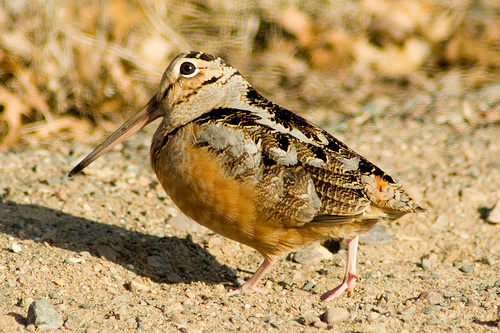It would appear that whilst we were driving back to the UK yesterday as part of the Channel fracas, albeit we were booked from Dunkirk to Dover so only had a long lorry queue to contend with which saw us miss our boat whilst actually watching it depart from about a couple of kms away, John and jenny Wainwright's birding scene was done to mechanical problems with the usually reliable car. As can be seen from John's report all now seems to well and under control. By the way, our farewell to Belgium was the delight of Jenny seeing a Hobby drift by the first-floor kitchen window, less than an hundred metres away. The bird is often seen by Marieke in the field further back but this would appear to be the closest to the house recorded by her so well done (my) Jenny.
Back to John's report for yesterday where readers will note the large numbers of Hoopoes recorded along with an extremely large flock of Choughs, not to mention a range of warblers, all three wheatears and both Rock and Blue Rock Thrush. Sounds like a great day for John and Jenny.
Sierra Loja: Wednesday 24 June
A hottish day with a very nice ( and welcome) breeze
Hi there, after a very exacerbating fortnight whereupon the radiator and water pump went , we have finally managed to get up to our favourite area, the Sierra Loja. After coffee we drove up the track to the left of the Guardia Civil barracks and as soon as we entered the tree line, a Spotted Flycatcher flew off a low branch and disappeared into the firs. Lots of Serins about here as well as a few Collared Doves, Spotless Starlings and House Sparrows. Also here an Orphean Warbler was singing.
 |
| Juvenile Black-eared Wheatear Oenanthe hispanica (PHOTO: Jenny Wainwright) |
 |
| Little Owl Athene noctua (PHOTO: Jenny Wainwright) |
 |
| Black Wheatears Oenanthe leucura (PHOTO: John Wainwright) |
 |
| Rock Thrush Monticola saxatilis (PHOTO: Jenny Wainwright) |
 |
| Southern Grey Shrike Lanius meridionalis (PHOTO: Jenny Wainwright) |
Onto the fir copse where another five Hoopoes were seen along with Mistle Thrushes, Woodchat Shrike, Goldfinches, Rock Sparrows and more Blackbirds. And as we made our way down we managed to find two more Blue Rock Thrushes.
 |
| Woodchat Shrike Lanius senator (PHOTO: John Wainwright) |
Check out the accompanying website at http://www.birdingaxarquia.weebly.com for the latest sightings, photographs and additional information.





























